
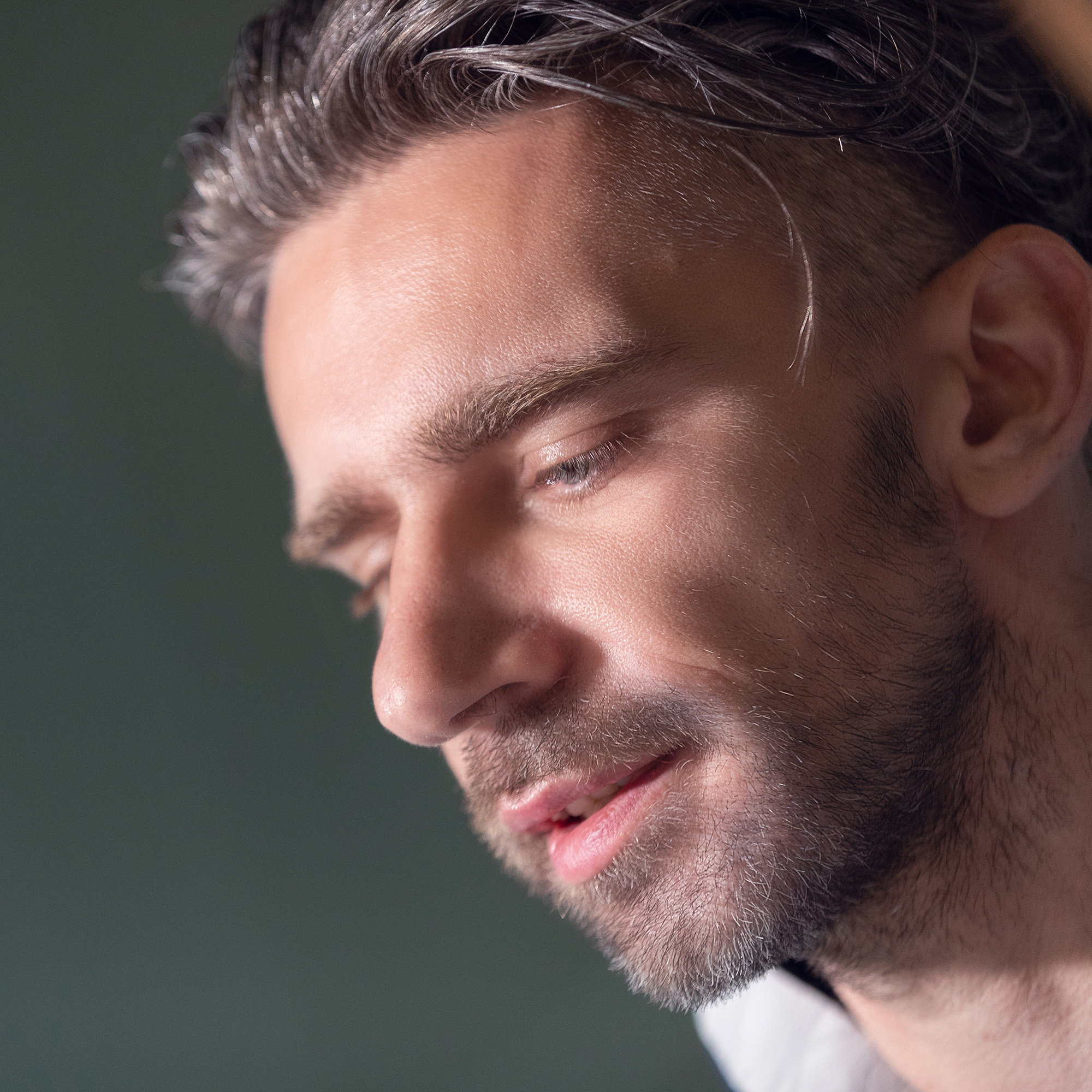
Christian Dimpker
N. 07 Filterspiel – Music for conferences
Duration: 12'
Instrumentation details:
1st percussion
2nd percussion
3rd percussion
4th percussion
N. 07 Filterspiel – Music for conferences
Translation, reprints and more
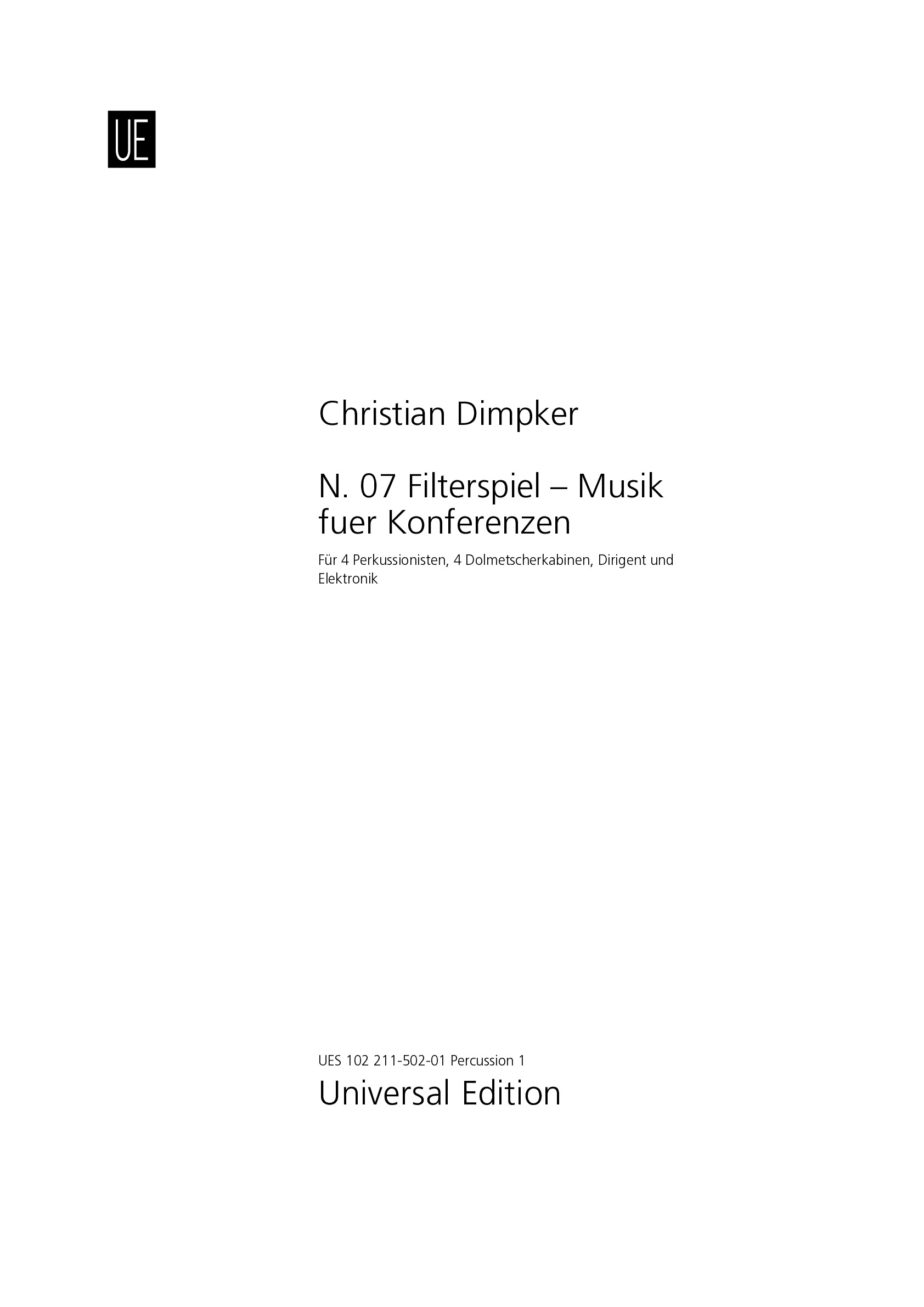
Christian Dimpker
1. Schlagzeug (N. 07 Filterspiel – Musik für Konferenzen)Type: Stimme
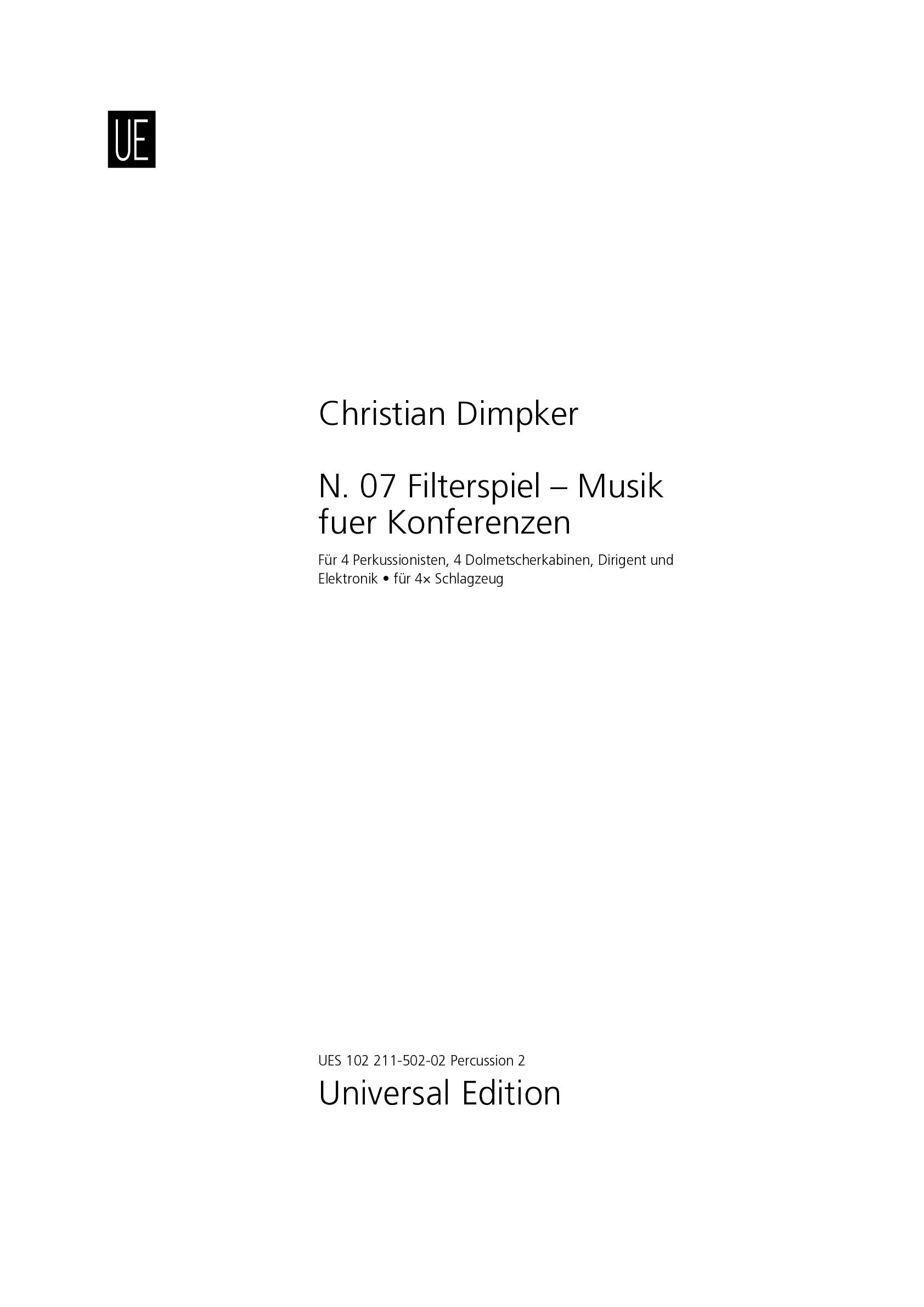
Christian Dimpker
2. Schlagzeug (N. 07 Filterspiel – Musik für Konferenzen)Type: Stimme
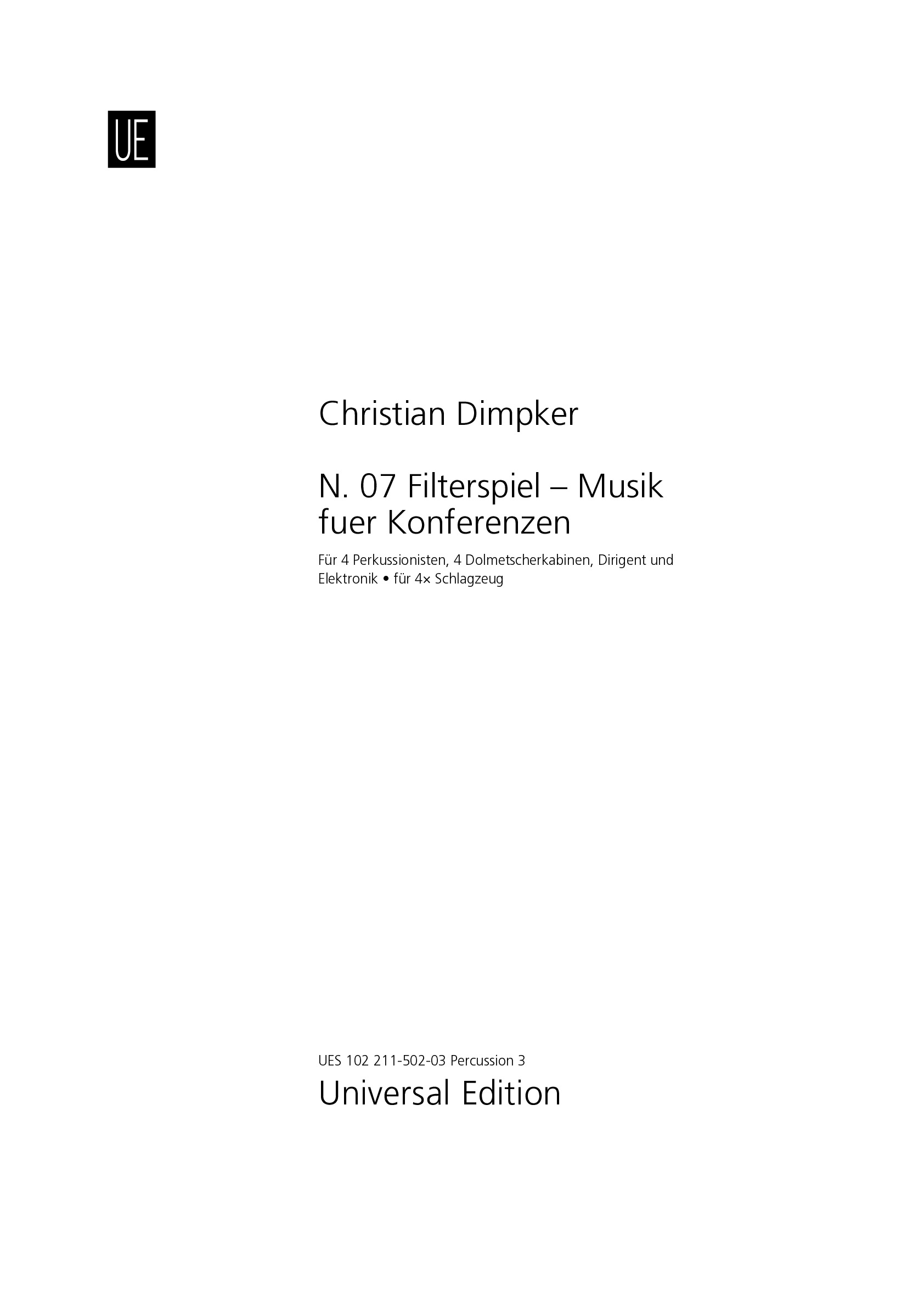
Christian Dimpker
3. Schlagzeug (N. 07 Filterspiel – Musik für Konferenzen)Type: Stimme
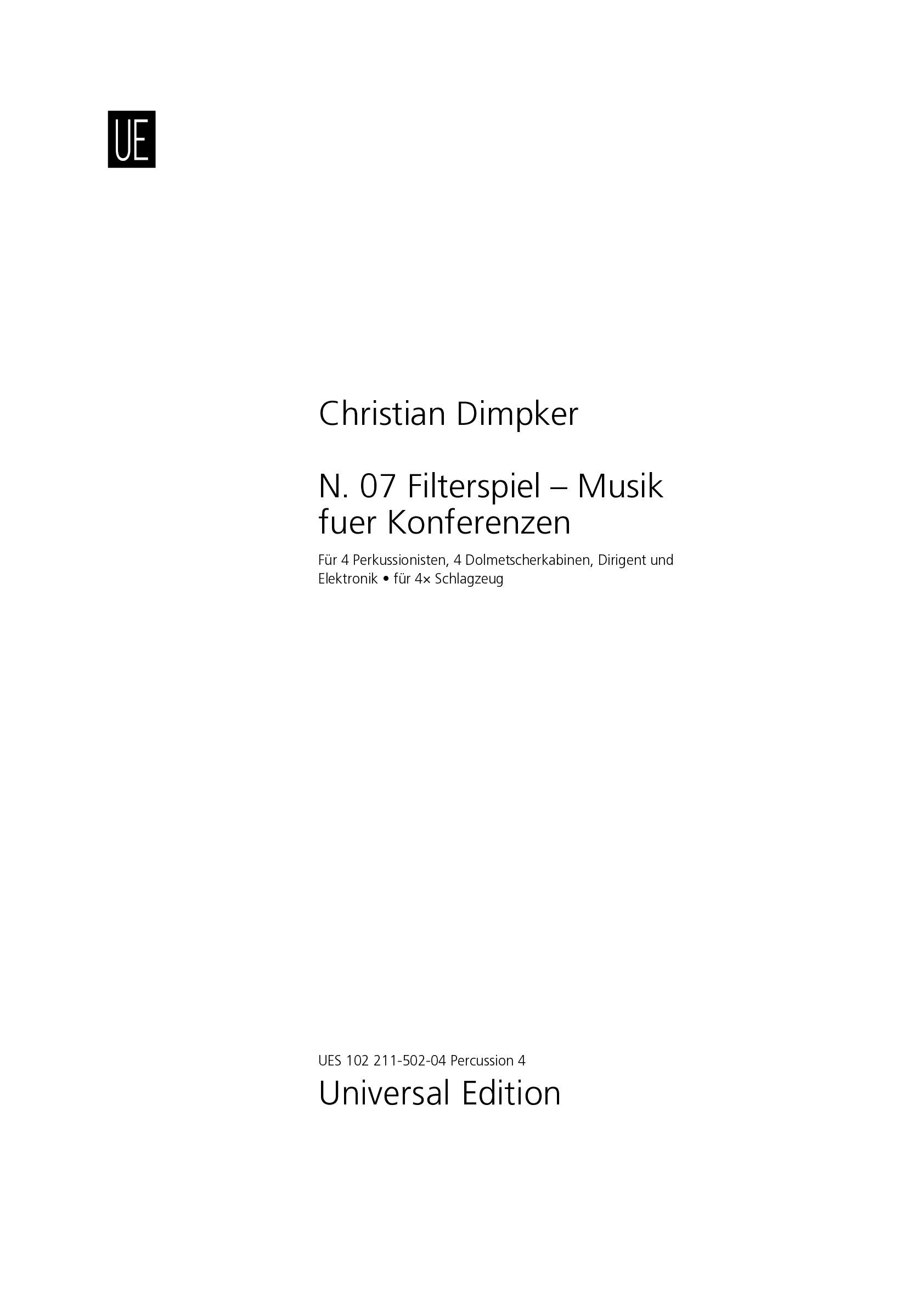
Christian Dimpker
4. Schlagzeug (N. 07 Filterspiel – Musik für Konferenzen)Type: Stimme
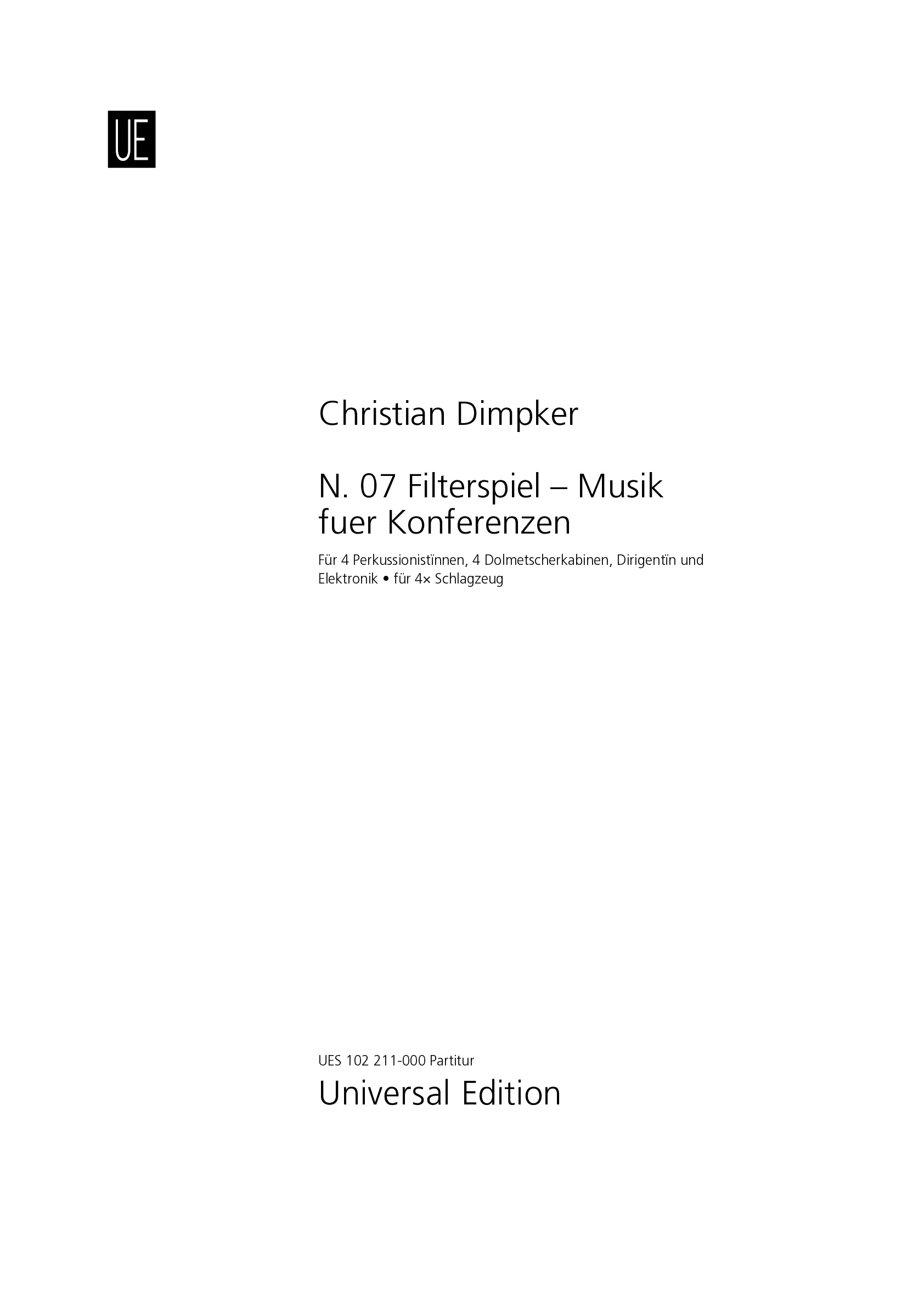
Christian Dimpker
N. 07 Filterspiel – Musik für KonferenzenOrchestration: Für 4 Perkussionistïnnen, 4 Dolmetscherkabinen, Dirigentïn und Elektronik
Type: Dirigierpartitur
Sample pages
Work introduction
The basic idea of Filterspiel – Music for conferences was to partially resolve the problem that the original sound cannot be muted in instrumental performances. Therefore, in this piece, all percussionists are placed in interpreter’s booths. When the instruments resonate with a low dynamic level inside these, they can barely be heard from the outside. However, when picked up by microphones, the sound may be transferred to the concert hall. Nevertheless, the audience may still watch the percussionists perform. Hence the cabins serve as filters. Not only when they play softly, but also when loud sounds are produced, the interpreter’s booths filter certain frequencies. Microphones are filters as well. This is especially valid for the utilised contact microphones as their frequency range is very limited. Finally, digital filters are used to distort the sounds created by the percussionists. Hence the title Filterspiel (filter play) is programmatic in nature. It was selected cautiously, being derived from Kreuzspiel (cross play), Karlheinz Stockhausen’s first early work. The very same work was also partially processed in Filterspiel. In parts B/C, the cut-off frequencies and the durations of the filters were derived from this score. Moreover, the percussionists draw a tribute to Stockhausen on the instruments. Due to the interpreter’s booths, the piece is ideal to be performed on conferences.
What is necessary to perform this work?
In the work »Filterspiel [Filterplay] – Music for conferences« four percussionists are situated inside interpreter’s booths. Viewing windows enable them to communicate with the conductor and the audience to watch the players’ actions. The booths are – as apparent from the stage overview on page VII – arranged side by side. They should be positioned far apart from each other and hence, if possible, the full width of the stage be used. If necessary, the two outer booths may also face towards the centre of the stage in order to improve the communication between the percussionists and the conductor.
Moreover, three types of filters are employed in the piece: the booths themselves act as acoustic filter since they do – according to their nature – attenuate certain frequencies whilst other pass their walls. It is here assumed that the instrumental sounds may be perceived outside the booths from the dynamic level mezzopiano/mezzoforte on. Moreover, the utilised microphones and loudspeakers also serve, up to a certain extent, as filters because they do – depending on the linearity of the frequency response – transform the instrumental sounds. The contact microphones act as the strongest filters. This is because they are only supposed to transmit frequencies from approximately 300 to 3400 Hz. The microphones are supposed to be positioned and adjusted by sound engineers. They also select the loudspeaker type. It is here only determined that high-quality transducers with a virtually linear frequency response should be used. Two loudspeakers per player are utilised. They are distributed freely in the concert hall. Finally, digital filters are employed. They further transform the recorded sounds. Their cut-off or centre frequency, respectively, and behaviour is – as apparent from the score – depicted by means of pitch-based notation systems. Since all instruments are inside interpreter’s booths, the ratio between the original signal and the modulated signal can amount up to 0% to 100% when playing with a low dynamic level. Additionally, the sound may be coloured by two different spaces (booth and concert hall). Accidentals only apply to the note they directly precede.
The piece can also be realised as a video work. For this purpose, one percussionist assumes the role of all four percussionists. She is recorded on film four times using a video camera and cardioid microphones (ORTF). The recording can be executed bit by bit and the scenes be combined with each other. This recording is then complemented by the microphone recordings inside the booth and the filter effects (as indicated in the score). The videos are subsequently output via four televisions positioned like the booths, while ensuring that the start of each video is triggered manually. This results in slight variations from performance to performance.
